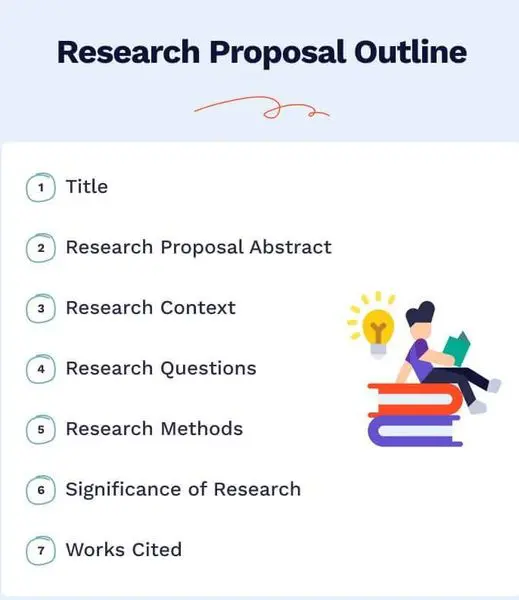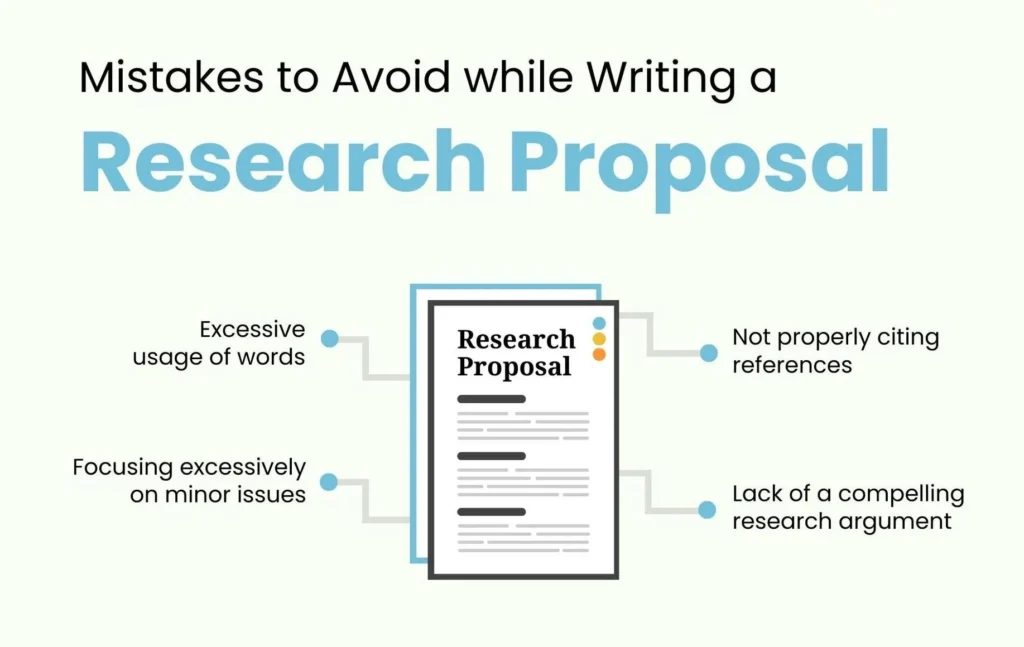In the vast world of academia, creating a research proposal is like making a roadmap for your academic adventure. Think of it as planning a trip to explore new territories, just like explorers did in the past. Your goal? To reach the heart of knowledge where exciting discoveries are waiting for you. But, similar to those brave adventurers, your journey starts with careful planning and a well-made map. That map, my friends, is your Research Proposal.
Surprisingly, did you know that research proposals are the key to getting money and recognition for your academic work? They are like a guide that helps scholars and scientists achieve their goals. These important documents open the doors to financial support for your research projects, making sure you have the things you need to uncover the secrets of your chosen subject.
In this detailed guide, we’ll start our own journey. We’ll learn how to create a research proposal format, starting from the basics and going into the little details. We’ll give you the knowledge and tools to make a proposal that not only sparks curiosity but also grabs the attention of academic decision-makers. So, let’s begin this adventure into proposal writing, where the treasures of knowledge are waiting for you.
Introduction To Research Proposals

Before diving into the nitty-gritty details of writing a research proposal, let’s understand what it is and why it’s important. A research proposal is a concise document that outlines the key aspects of a research project. It serves as a roadmap, guiding the researcher in defining the research problem, setting objectives, and planning the research process.
Components of a Research Proposal Format
-
Understanding the Purpose:
- In this initial step, it’s crucial to grasp why you’re embarking on this research journey. Clarify the purpose of your study. Are you seeking to solve a specific problem, contribute to existing knowledge, inform policy decisions, or address a gap in the literature?
- Identify your research’s broader goals and objectives. What do you hope to achieve through your research project? Understanding the purpose helps you stay focused and guides your subsequent decisions in the proposal.
-
Choosing a Research Topic:
- Selecting the right research topic is a pivotal decision. It forms the foundation of your entire research endeavor. A well-chosen topic should meet several criteria:
- Relevance: Ensure that your topic is relevant to your field of study and addresses an important issue or question.
- Interest: Choose a topic that genuinely interests you. Research is a long and sometimes challenging process, so passion for your subject matter will keep you motivated.
- Feasibility: Consider the availability of resources, data, and time constraints. Your topic should be feasible given the resources at your disposal.
- Selecting the right research topic is a pivotal decision. It forms the foundation of your entire research endeavor. A well-chosen topic should meet several criteria:
-
Crafting a Research Question:
- A well-defined research question is at the core of your research proposal format. It serves as a roadmap for your study and helps you maintain focus. Key attributes of a good research question include:
- Specificity: The question should be clear and specific, avoiding ambiguity.
- Clarity: Ensure that the question is easily understood by others.
- Relevance: The question should directly address the research problem or purpose you’ve identified.
- Potential for Results: A good question should be capable of generating meaningful results or insights.
- Consider how your research question aligns with existing literature and contributes to the broader understanding of your field.
- A well-defined research question is at the core of your research proposal format. It serves as a roadmap for your study and helps you maintain focus. Key attributes of a good research question include:
By following these steps, you establish a strong foundation for your research proposal. Understanding your research’s purpose, choosing an appropriate topic, and crafting a clear research question is essential in ensuring that your proposal is well-structured and addresses a meaningful research problem or question.
- Title:
- The title should be a concise and clear reflection of the main focus of your research. It should give readers a sense of what your study is about. Make sure it is both informative and engaging.
- Abstract:
- The abstract is a brief summary of the key elements of your research proposal. It typically includes the following:
- Research question or problem statement.
- A brief overview of the methodology.
- Expected outcomes or significance of the study.
- An effective abstract should provide a snapshot of your proposal, allowing readers to quickly understand its main points without having to read the entire document.
- The abstract is a brief summary of the key elements of your research proposal. It typically includes the following:
- Introduction:
- In the introduction, you set the stage for your research by addressing the following:
- Introduce the research problem or question you are investigating.
- Explain the significance of the problem within your field of study or within a broader context.
- Provide background information to help readers understand the context and relevance of your research.
- In the introduction, you set the stage for your research by addressing the following:
- Literature Review:
- This section involves reviewing existing literature related to your research topic. It serves several purposes:
- Establishing the context for your study by discussing previous research and theories.
- Identifying gaps or areas where further research is needed.
- Demonstrating your familiarity with the current state of knowledge in your field.
- The literature review should be comprehensive and organized logically, showing how past research relates to your study.
- This section involves reviewing existing literature related to your research topic. It serves several purposes:
- Methodology:
- In the methodology section, you describe the research methods you plan to use in your study. This includes:
- Data collection methods (e.g., surveys, interviews, experiments).
- Data analysis techniques.
- Sampling methods (if applicable).
- Ethical considerations.
- Explain why these methods are appropriate for addressing your research question.
- In the methodology section, you describe the research methods you plan to use in your study. This includes:
- Significance of the Study:
- This section highlights the importance of your research and the potential contributions it can make to your field. Explain why your study matters and how it can fill gaps in existing knowledge or benefit society, policy, or practice.
- Research Timeline:
- Provide a timeline or schedule for your research, outlining key milestones and deadlines. This helps demonstrate that you have a clear plan for conducting your study efficiently.
- References:
- List all the sources you’ve cited or referenced in your proposal, following a specific citation style (e.g., APA, MLA). This allows readers to verify your sources and explore the relevant literature further.
A well-structured research proposal should be organized and clearly convey the essential elements of your study, from the research question to the methodology and its significance. It serves as a blueprint for your research project and helps reviewers or readers understand the value and feasibility of your proposed research.
Examples of Research Proposals

Let’s examine two sample research proposals to get a better understanding of how to apply the concepts discussed:
Proposal 1: Exploring Climate Change Effects
Description: This research proposal example aims to investigate the effects of climate change on a specific ecosystem, such as a coral reef, and how these changes impact marine biodiversity. The study will be conducted in a tropical coastal region over a two-year period. It is of utmost importance to understand the potential consequences of climate change on fragile ecosystems, as this knowledge can inform conservation efforts and climate policy.
Key Elements of Proposal 1:
- Title: “Exploring Climate Change Effects on Marine Biodiversity in Tropical Coastal Regions.”
- Abstract: A brief summary of the research, including the research question, methodology (e.g., data collection through field surveys and satellite imagery analysis), and expected outcomes (e.g., identifying vulnerable species).
- Introduction: An introduction that explains the significance of studying climate change’s impact on ecosystems and the rationale for choosing the specific research area.
- Literature Review: A comprehensive review of existing literature on climate change effects on marine ecosystems, emphasizing gaps in knowledge or areas requiring further investigation.
- Methodology: Details on the research methods, such as field surveys, data collection techniques, and statistical analyses, with explanations of why these methods are suitable for the research.
- Significance of the Study: An explanation of how the study’s findings can contribute to conservation efforts and inform climate change mitigation policies.
- Research Timeline: A proposed timeline outlining the research stages, from data collection to analysis and reporting.
- References: A list of cited sources following a specific citation style.
Example of Proposal 1: Title: “Assessing the Impact of Ocean Acidification on Coral Reefs in the Maldives”
Abstract: This research proposal aims to investigate the effects of ocean acidification, a consequence of climate change, on coral reefs in the Maldives. The study will involve underwater surveys, water quality monitoring, and coral health assessments over a two-year period. Coral reefs are vital ecosystems, and understanding the threats they face from environmental changes is crucial for their preservation.
Proposal 2: Educational Reform in Urban Schools
Description: This research proposal example focuses on the implementation and impact of an educational reform program in urban schools with a history of low academic performance. The program aims to improve student outcomes by introducing innovative teaching methods, teacher training, and increased parental involvement. The study will be conducted over three years and will assess the program’s effectiveness in enhancing student achievement and engagement.

Key Elements of Proposal 2:
- Title: “Assessing the Impact of Educational Reform on Student Achievement in Urban Schools.”
- Abstract: A concise summary of the research, including the research question, the educational reform program’s components, and the expected outcomes (e.g., improved test scores, increased graduation rates).
- Introduction: An introduction that highlights the importance of addressing educational disparities in urban areas and the rationale for the proposed reform.
- Literature Review: An examination of relevant literature on educational reform efforts in urban schools, emphasizing the need for innovative approaches and the potential benefits for students.
- Methodology: Detailed explanations of research methods, including surveys, classroom observations, and data analysis techniques, along with reasoning for their selection.
- Significance of the Study: An explanation of how the research findings can inform educational policy and improve educational outcomes for students in urban settings.
- Research Timeline: A proposed timeline outlining the various stages of the research, from implementing the reform program to assessing its impact.
- References: A list of cited sources adhering to a specific citation style.
Example of Proposal 2: Title: “Evaluating the Impact of the ‘Urban Scholars’ Educational Reform Program in New York City Schools”
Abstract: This research proposal example seeks to assess the effectiveness of the “Urban Scholars” educational reform program in selected New York City schools. The program, designed to enhance student achievement and engagement through innovative teaching strategies and increased community involvement, will be implemented over a three-year period. Addressing educational disparities in urban areas is critical, and this study aims to provide insights into successful reform initiatives that can be replicated in similar settings.
Common Mistakes to Avoid

-
Lack of Clarity in Research Objectives:
- Issue: Failing to clearly define your research objectives can lead to confusion and ambiguity. Vague objectives make it challenging for reviewers to understand the purpose and scope of your study.
- Solution: Ensure that your research objectives are specific, measurable, achievable, relevant, and time-bound (SMART). They should directly align with your research question and clearly state what you aim to accomplish.
-
Insufficient Literature Review:
- Issue: A literature review provides the foundation for your research by demonstrating your knowledge of existing work in your field. Neglecting this step can make your proposal appear uninformed or disconnected from prior research.
- Solution: Conduct a thorough literature review to identify key theories, studies, and gaps in knowledge related to your topic. Explain how your research fits into the current scholarly conversation and why it’s needed.
-
Inadequate Methodological Details:
- Issue: Failing to provide clear and comprehensive methodological details can leave reviewers skeptical about the feasibility and rigor of your study. Without a well-defined methodology, it’s difficult to assess the validity of your research.
- Solution: Describe your research methods in detail, including the data collection techniques, instruments, sampling methods, and data analysis procedures. Justify why these methods are appropriate for addressing your research question.
-
Ignoring Ethical Considerations:
- Issue: Overlooking ethical considerations can raise ethical concerns among reviewers and potentially harm your research’s credibility and integrity. Ethical concerns may include issues related to human subjects, animal welfare, data privacy, or conflicts of interest.
- Solution: Acknowledge and address ethical considerations in your proposal. Describe how you will obtain informed consent, ensure participant confidentiality, and follow ethical guidelines and regulations relevant to your research. If your research involves sensitive topics or vulnerable populations, elaborate on how you will protect their rights and well-being.
By avoiding these common mistakes, you can strengthen your research proposal and increase the likelihood of it being well-received by reviewers or evaluators. A well-crafted proposal with clear objectives, a robust literature review, comprehensive methodological details, and ethical considerations addressed will contribute to the overall quality and credibility of your research project.
Tips for Writing a Winning Research Proposal Format
To create a research proposal that stands out, consider the following tips:

-
Be Clear and Concise:
- Clarity: Use straightforward language and avoid excessive technical jargon. Ensure that your proposal is understandable to a broad audience, including non-experts in your field.
- Conciseness: Be concise in your writing. Present your ideas clearly and avoid unnecessary wordiness. Reviewers appreciate proposals that get to the point efficiently.
-
Justify the Significance:
- Clearly State the Importance: Clearly articulate why your research is significant. Explain the relevance of your study to your field, highlighting any gaps or areas where further investigation is needed.
- Impact: Describe how your research can potentially make an impact, whether it’s advancing knowledge, informing policy, or addressing a pressing issue in society.
-
Show Methodological Rigor:
- Detailed Methodology: Provide a thorough and detailed explanation of your research methods. Describe how you plan to collect data, conduct analyses, and ensure the validity of your results.
- Rationale: Justify your choice of methods by explaining why they are the most suitable for addressing your research question. Address potential limitations and alternative approaches.
-
Proofread and Edit:
- Error-Free Writing: Ensure your proposal is free of grammatical errors, typos, and formatting issues. These can detract from the professionalism of your proposal.
- Clarity: Read your proposal carefully to ensure that your ideas are presented clearly and logically. Clarify any confusing or ambiguous sentences.
-
Structure and Organization:
- Logical Flow: Organize your proposal in a logical sequence, with each section flowing naturally from the previous one. Use headings and subheadings to enhance readability.
- Introduction: Start with a compelling introduction that captures the reader’s attention and provides context for your research problem example.
- Transitions: Use transition sentences or phrases to guide readers smoothly from one section to the next.
-
Cite Relevant Literature:
- Thorough References: Ensure that you properly cite and reference all relevant literature in your proposal. This demonstrates your knowledge of the field and helps establish the context of your research.
-
Engage the Reader:
- Engaging Writing: Write in a way that engages the reader’s interest and curiosity. Use real-world examples, anecdotes, or compelling statistics to draw readers into your proposal.
- Research Question: Craft a clear and intriguing research question that prompts readers to want to know more about your study.
-
Tailor to the Audience:
- Consider Reviewers: Keep in mind the audience who will be reviewing your proposal. Tailor your language and content to their expectations and preferences.
-
Seek Feedback:
- Peer Review: Before finalizing your proposal, seek feedback from peers, mentors, or advisors. They can provide valuable insights and help you identify areas for improvement.
-
Follow Guidelines:
- Adhere to Requirements: Follow the specific guidelines and formatting requirements provided by the funding agency or institution to which you are submitting your proposal. Failure to do so can result in rejection.
By following these tips, you can enhance the quality of your research proposal format and increase your chances of success in obtaining research funding or approval for your study. A well-crafted proposal demonstrates your research readiness and commitment to contributing to your field.
Frequently Asked Questions (FAQs)
What is the purpose of a research proposal?
A research proposal outlines the objectives, methods, and significance of a research project, serving as a roadmap for researchers.
How do I choose a research topic?
Select a research topic that is relevant, interesting, and feasible within your resources and timeframe.
What should be included in the methodology section of a research proposal format?
The methodology section should detail the research methods, data collection procedures, and data analysis techniques.
Why is a literature review important in a research proposal?
A literature review provides the background and context for your research, highlighting existing knowledge and gaps.
How can I make my research proposal stand out?
To stand out, ensure clarity, justify the significance of your research, demonstrate methodological rigor, and thoroughly proofread your proposal.
Conclusion
Writing a research proposal may appear daunting, but with meticulous planning and keen attention to detail, you can create a compelling document that sets the stage for your research journey. For those seeking Assignment Help in Canada, mastering the art of crafting a research proposal is essential. This skill not only aids in structuring your thoughts and outlining your research but also plays a crucial role in persuading others about the significance of your work.
In conclusion, writing a research proposal is a skill that every researcher should master. It not only helps you organize your thoughts and plan your research but also convinces others of the value of your work. With the guidance provided in this article, you are well-equipped to embark on your research proposal journey. Happy researching!



